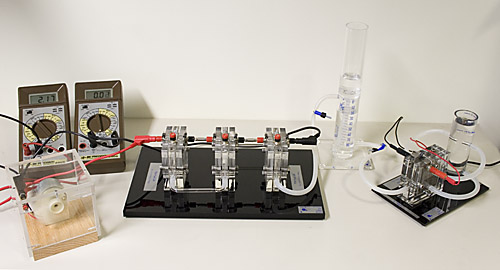
| Electricity and Magnetism > EMF and Current | DCS# 5E40.60 |

| hydrogen
fuel
cell stack |
202-19-D |
| electrolyzer |
202-19-D |
| AC
adapter/power supply |
202-19-D6 |
| DC/DC converter |
202-19-D6 |
| fan |
202-19-E2 |
| two multimeters |
214-02-C6 |
| distilled water |
202-01-A |
| video
camera |
202-09-D |